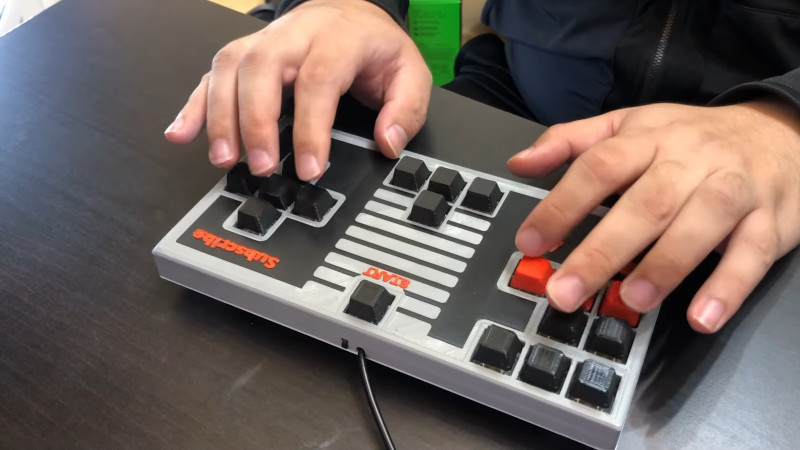When it comes to competitive fighting games, having the right controller in your hands can make the difference between victory and defeat. Many tournaments have strict rules around controllers for this very reason. [Akaki Kuumeri] has recently put together a custom controller, aimed at maximising performance in Super Smash Brothers: Ultimate on the Nintendo Switch. (Video, embedded below.)
The build is assembled in an attractive 3D-printed body, made to be reminiscent of the original Nintendo Entertainment System controller. Inside, a cheap third-party Gamecube controller is used to interface with the console. Mechanical keyboard switches are used to replace the buttons and even the analog sticks, with a special modifier key that enables walking and running across the stage. This is pulled off with a handful of resistors emulating the intermediate position of the analog sticks, and makes pulling off advanced combos easier.
It’s a fun build, and we can imagine the precise digital key inputs having some benefits over analog controls. It also pays to note that such a build wouldn’t be as easy without the ready supply of mechanical key switches thanks to the custom keyboard subculture. We’ve seen these satisfying switches cropping up in many controller builds in recent times.
















When i made a gamepad for megadrive emulators i put all the switches at 45 degrees so the d pad could be smaller as the switch corners would meet in the middle. I laid a keyboard plate over a stomp box case and scratched out the cutouts, then drilled and filed them.
Keyswitches are so high quality, it’s amazing they aren’t far more widely used. Your average cheap microswitch has that bendy metal lever, they’re not exactly unbreakable or anything, even though people seem to think they’re amazingly reliable.
Cherry switches might not be as good as optical, but they’re small, standardized, reliable, affordable, easy to source, and generally seem like a way better choice for a lot of things.
Great Video! I watched to the end and I really like your implementation of the shift resistors to recreate the analog potential stick. Your soldering work was also super good. I’m a bit old for smash bros (and soldering small connections) but my youngest son would be all over this and perhaps it’s something he might like to tackle together.
We used to replace the joystick with Sanwa buttons for Street Fighter competitions back in the day, this isn’t a new concept. I remember seeing people asking about trying Cherry keyboard switches and getting laughed off because the spring resistance and switch travel is so much higher on keyboards, compared to a pushbutton designed for an arcade.
It’s a neat concept but your fingers will be exhausted quickly. Keyboard switches need to be a certain level of firm and consistent because language is very specific, and users will easily catch mistakes as they type. When you’re mashing buttons on an arcade game you aren’t shown what you inputted and you’re expected to complete complex inputs chains within less than a second, so the buttons aren’t very accurate and require little effort to activate. The games then compensate in software for the lack of accuracy and players’ tendency to mistime or duplicate the inputs.
I know with keyboard mods being all the rage that some people can’t resist playing with all those spare switches they have lying around, but this is like mowing your lawn with a weed whacker; highly inefficient and more likely to cause injury over time. You get the same benefits from just using proper arcade switches in the first place.
I never thought that would work:
In smash bros, you have to rely heavily on the analog stick because you do “smash” and “tilt” with it during combat. I must be missing something.